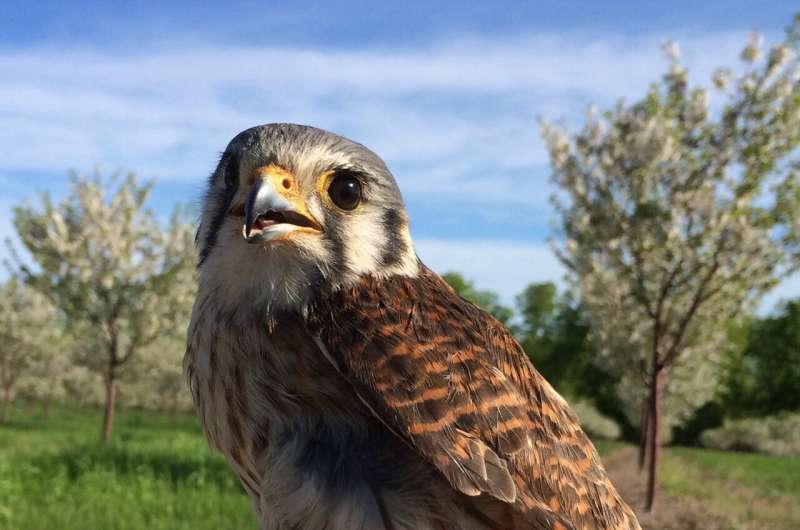Cherry farmers in northern Michigan are discovering an unexpected ally in their battle against crop damage and food safety risks: the American kestrel. This small falcon, known for its remarkable hunting skills, may provide significant benefits to growers by deterring fruit-eating birds and reducing the potential for foodborne illness.
Research conducted by Michigan State University (MSU) and published on November 27, 2025, in the Journal of Applied Ecology, reveals that kestrels not only protect sweet cherry crops but also contribute to food safety by minimizing bird droppings on the fruit. The lead author of the study, Olivia Smith, noted the kestrel’s unique ability to hover midair while scanning for insects and small birds, which adds an intriguing aspect to their role in agricultural management.
Kestrels as Natural Pest Controllers
Farmers have long struggled to keep birds away from their crops, often resorting to methods like nets, noisemakers, and scarecrows. Unfortunately, these techniques can be costly and ineffective, leading to annual losses of 5% to 30% of sweet cherry crops in states including Michigan, Washington, California, and Oregon. The presence of hungry birds is not only a threat to yields but also raises concerns about pathogens in their droppings.
To address these issues, researchers installed nest boxes in eight cherry orchards in northern Michigan, encouraging kestrels to take up residence. Observations revealed a significant decline in the presence of common fruit-eating birds, such as robins and starlings, when kestrels were nesting nearby. This natural predation resulted in a more than tenfold reduction in cherry damage due to bird feeding activities.
Food Safety Benefits of Kestrel Presence
The study’s findings indicate that the kestrel’s presence also correlates with a notable decrease in bird droppings on cherry trees. Kestrels were associated with a threefold reduction in visible droppings, which is critical for maintaining food safety. Senior author Catherine Lindell, an associate professor emerita of Integrative Biology at MSU, highlighted that while kestrels also produce droppings, their role in keeping other birds at bay outweighs this concern.
DNA analysis of droppings from birds visiting the orchards indicated that approximately 10% of these samples contained Campylobacter, a bacteria responsible for foodborne illness that can cause symptoms such as diarrhea and fever. While no outbreaks of Campylobacter have been linked to cherries, and only one case was traced to birds, the research points to the potential for kestrels to enhance food safety in crops known to carry higher risks, such as leafy greens.
“This research suggests that kestrels could serve as a valuable tool for improving food safety in agriculture,” Smith stated. “By reducing the amount of bird droppings, we can decrease the opportunities for transmission of pathogens.”
While kestrels may not completely eliminate bird-related challenges for farmers, they represent a low-cost and low-maintenance solution for managing pests in orchards. Lindell emphasized that incorporating kestrels into bird management strategies could prove beneficial, particularly in areas where these small raptors are more likely to thrive.
As cherry growers prepare for the next planting season, the research from MSU offers an innovative perspective on sustainable farming practices, showcasing the potential of natural predators in enhancing crop safety and yield.







